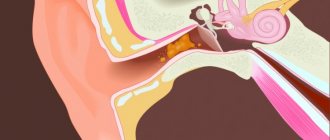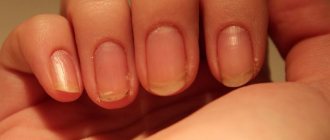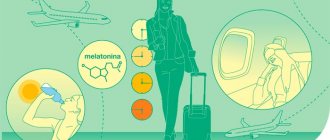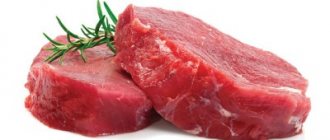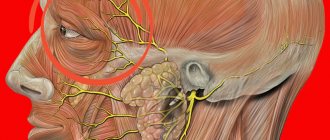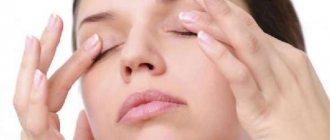Co-author, editor and medical expert – Maksimov Alexander Alekseevich.
Last updated date: 08/29/2020
Quantity 210.
Allergy and nasal congestion are two inseparable concepts that characterize such a common disease as allergic rhinitis. However, sometimes impaired nasal breathing, which has an obvious allergic origin, can simply be ignored due to the lack of obvious contact with the allergen. In fact, not all substances that can cause an inadequate reaction in the human body are visible to the naked eye, but nevertheless, they often become powerful allergens that cause nasal congestion and other unpleasant symptoms.
Rhinosinusitis
Rhinosinusitis is an inflammation of the mucous membrane of the nasal cavity and sinuses, which is accompanied by the accumulation of mucus and swelling. According to the American Academy of Allergy, Asthma and Immunology, acute rhinosinusitis usually occurs like any viral infection or cold.
It can lead to swelling of the sinuses. Which, in turn, traps bacteria and mucus in the nasal passages.
According to international standards, rhinosinusitis is considered chronic if a person experiences three or more exacerbations of this disease during the year. They usually cause swelling and mucus buildup in the sinuses.
Symptoms of sinusitis include:
- pressure around the eyes, forehead or nose,
- feeling of heaviness in the face;
- nasal congestion;
- cough;
- discharge of discolored and thick mucus;
- unpleasant taste in the mouth due to postnasal drip;
- feeling of fullness in the ear;
- headache, especially in the front of the head;
- toothache;
- fatigue;
- fever, although this is less common.
Treatment of sinusitis
Most acute sinus infections are caused by viruses. Therefore, this condition resolves with proper treatment of the cold.
However, if sinus problems persist or worsen after 7 to 10 days of symptoms, rhinosinusitis is likely bacterial. In these cases, the doctor may prescribe antibiotics.
Causes of allergic rhinitis
The nasal mucosa becomes inflamed under the influence of various types of irritants. After penetration of the allergen, immune cells produce special antibodies to fight the foreign element. A powerful release of histamine triggers the process of allergic inflammation; characteristic signs appear not only in the nasal passages, eye area, but also in other parts of the body. Allergic rhinitis code according to ICD 10 – J30.0.
Main allergens:
- dust mites;
- feather, fluff, wool, saliva, particles of dead epidermis of domestic animals and birds;
- mold spores;
- dry food for cats, dogs, birds and fish;
- highly allergenic products;
- book and house dust;
- feather filling in pillows and blankets;
- pollen of alder, ragweed, birch, loboda, milkweed, poplar fluff.
The patient encounters some types of allergens all year round: house dust, dry food for parrots and fish, dog and cat hair, mold spores. With the seasonal nature of the disease, acute symptoms occur only during the flowering period of certain plants that produce pollen with irritating properties.
Find out the instructions for using calcium gluconate tablets for allergic diseases.
Can allergies raise the temperature and how can I bring my readings back to normal? The answer is in this article.
Types of allergic rhinitis:
- periodic. Negative symptoms appear during the flowering season of allergenic plants;
- chronic. Throughout the year, signs of allergic inflammation last for a month or more. Negative symptoms occur against the background of prolonged or constant contact with the irritant;
- intermittent. Acute signs of allergy cause discomfort for several days, one to two weeks, but not more than a month. This type of rhinitis occurs no more than four days a week.
Cold
Nasal congestion is a common symptom of a cold. Some people may also experience headaches due to a cold. Although this is a rare symptom.
Other symptoms of a cold:
- cough and/or mild chest pain,
- a sore throat,
- sneezing,
- fever,
- weakness or fatigue.
Cold treatment
Treatment for a cold usually requires rest and fluids. The patient may also take medications such as paracetamol and ibuprofen.
However, during a pandemic, you need to consult a doctor before self-medicating.
Home remedies such as humidifiers or hot showers can also help combat symptoms.
If sinusitis symptoms do not go away within 10 to 14 days, it may indicate a sinus infection. You should consult your doctor.
Flu
Influenza is a respiratory disease caused by the influenza virus.
People with the flu may also experience nasal congestion and headaches.
Other symptoms:
- cough,
- a sore throat,
- muscle pain,
- fatigue,
- fever.
Some people may experience vomiting and diarrhea, but this is more common in children.
Sometimes patients with the flu develop serious complications.
The following symptoms should cause concern:
- labored breathing,
- chest pain,
- fatigue or dizziness,
- convulsions,
- severe muscle pain,
- severe weakness.
Seek emergency medical help if you experience any of the symptoms listed above.
Treatment
Your doctor may prescribe antiviral medications to prevent complications from occurring.
Rules for the use of natural ingredients
Herbalists recommend natural ingredients for the treatment of acute and chronic rhinitis. Without the use of antihistamines, allergic rhinitis cannot be cured, but herbal decoctions are beneficial: they reduce sensitization of the body, strengthen the immune system, reduce inflammation of the mucous membrane and the area of the nasolabial triangle.
Rules of application:
- choose several recipes, visit an allergist, find out a doctor’s opinion about folk remedies for the runny nose: some herbs increase acute symptoms;
- after a visit to the doctor (if the herbal remedies are approved), begin therapy in accordance with the recommendations;
- prepare the formulations strictly according to the recipe, take according to the instructions;
- It is important to remember: irregular use of folk remedies reduces the effectiveness of therapy;
- do not exceed the daily norm, take breaks between courses;
- If negative reactions occur after drinking the decoction or rinsing the nose, stop the procedure and consult an allergist for advice.
Recipes for adults
Herbal medicines complement the treatment of allergic rhinitis in adults, cleanse the body, and strengthen the immune system. Rosehip infusion, rich in ascorbic acid, is useful. This component reduces capillary permeability and reduces the penetration of allergens: strong vessels retain hazardous substances.
Helpful remedies for allergies:
- celery infusion. You will need a medium root and a liter of cold water, necessarily purified or boiled. Wash the root, peel the celery, chop thinly, place the plates in a container, pour in water. After 2 hours, the healing infusion is ready. For 14 days, drink the product 10 minutes before meals, 1/3 cup;
- mint tea. A useful product with a pleasant aroma. Put a teaspoon of chopped leaves into a glass, pour in boiling water, wait 20 minutes. Remove natural raw materials, strain the drink, drink in two doses. Mint tea not only cleanses the body and saturates it with useful elements, but also helps with headaches and relieves irritation. These signs often appear in patients with allergic rhinitis;
- dandelion root decoction. A folk remedy with an active cleansing and anti-inflammatory effect. To enhance the effect, herbalists recommend mixing dandelion root and elecampane in equal proportions. Natural raw materials – 3 tbsp. l., hot water - 1.5 liters. Boil the mixture for a quarter of an hour, leave for 30–40 minutes, filter. Take a quarter glass daily in the morning and evening before meals. The course is 2 weeks, then a break for 10 days, to consolidate the effect, repeat the therapy;
- St. John's wort infusion. Another natural remedy to reduce sensitization in the body. Grind dried flowers and leaves, take a couple of dessert spoons, pour into a thermos, pour boiling water (1 l). After 45 minutes, the useful infusion is ready. Strain the folk remedy and take 50 ml twice a day. The therapeutic course for allergic rhinitis is two weeks. Even after the symptoms disappear and acute signs are eliminated, it is important to drink the product for 14 days to consolidate the result.
Look at the list and characteristics of tablets for sun allergies in children and adults.
Effective methods for treating allergic rashes on the face in adult patients are described on this page.
Follow the link https://allergiinet.com/zabolevaniya/u-vzroslyh/keratit.html and learn about what allergic keratitis is and how to treat the disease.
allergiinet.com
Allergy
Allergies can cause nasal congestion and headaches. When a headache develops due to an allergy, the patient may also experience other symptoms, such as:
- itchy eyes and watery eyes,
- runny nose,
- pain in the face around the cheeks and nose.
Treatment
First of all, the patient should avoid allergy triggers as much as possible.
Symptoms of the disease can be treated with antihistamines. However, choosing them or other medications is the competence of only an allergist. He may also recommend a course of allergen-specific immunotherapy.
Symptoms
An allergic reaction can be accompanied by various symptoms that differ in severity and duration. Main clinical signs of the disease:
- frequent sneezing;
- nasal congestion;
- profuse, watery rhinorrhea;
- itching of the skin, eyes, nose;
- cough, shortness of breath;
- skin rashes;
- swelling of the lips, face, neck;
- dyspeptic disorders.
The reaction of the immune system to the action of an allergen can be expressed in the form of anaphylactic shock. This condition requires immediate help.
To quickly notice anaphylactic shock, you should pay attention to:
- intensity of swelling, rash; blood pressure level (usually it decreases);
- severity of shortness of breath (difficulty breathing can be caused by bronchospasm or swelling of the neck, which compresses the organs of the respiratory tract);
- presence of vomiting, nausea;
- level of consciousness (a person may be inhibited or even lose consciousness);
- severe weakness;
- frequent pulse.
If medical assistance is not provided in a timely manner, death is possible.
To prevent the development of anaphylactic shock, it is necessary to consult an allergist when the first signs of an allergic reaction appear. Thanks to a complete examination, he accurately determines the type of allergen and determines further treatment tactics.
Respiratory syncytial infection
Respiratory syncytial virus (RS virus) is an acute viral infectious disease of the nose, lungs, and throat. Although this condition can affect anyone, it is more common in children.
The virus is often the cause of bronchiolitis in children and the elderly.
The virus can cause a dull or mild headache and nasal congestion.
In some cases, the MS virus may cause other symptoms, such as:
- cough,
- fever,
- fatigue,
- dyspnea,
- a sore throat,
- wheezing.
Treatment
Most adults and children can treat illness caused by the RS virus at home. It usually goes away within 1-2 weeks.
However, before giving any medications to children, parents should talk to their doctor.
Older adults, infants, and people with weakened immune systems are at greater risk of developing severe symptoms. They should see a doctor immediately if they experience breathing problems.
Nasal congestion due to allergies: treatment in adults
In addition to prescribing medications, you can fight congestion in other ways. Below are the most effective techniques.
Massage and acupuncture of the nose are performed by influencing special biological points. The main advantage of massage is its accessibility. You can massage the base and wings of the nose, the points between the eyebrows and on the bridge of the nose anywhere and at any time.
The main feature of this treatment area is safety. There are many homeopathic remedies that can help get rid of congestion. These include:
- Aconite;
- Gelsenium;
- Allium flail;
- Stikta;
- Sulfur, etc.
Each remedy combats a specific type of problem.
Most often, folk methods act as a complement to traditional treatment. In this case, you can use the following techniques:
- rinsing the nose with saline solution;
- instillation of aloe juice and garlic into the nose;
- carrying out steam inhalations over decoctions of chamomile, calendula or regular potatoes.
Herbal medicines are distinguished by their safety, due to which they can be used both in pregnant and lactating women, and in children. The best means are:
- chamomile;
- sage;
- calendula;
- eucalyptus leaves.
Surgical treatment of difficult nasal breathing is performed only in emergency cases. Such situations include:
- adenoids;
- deviated septum;
- tumor processes;
- the presence of severe inflammation;
- entry of a foreign body.
Physiotherapy for nasal congestion includes several techniques:
- UFO (ultraviolet radiation) - this procedure is carried out 2-3 days in the morning. Each nasal canal is treated for 1-2 minutes, depending on the complexity of the disease;
- UHF - treatment is carried out through weak electrical impulses. At the same time, it is recommended to carry out the procedure in the same way in the morning;
- Laser therapy is carried out in a physiotherapy room under the supervision of a specialist. It is considered the most effective.
There are several points responsible for the feeling of nasal congestion. In this case, acupuncture gives an amazing effect, almost instantly making a person’s breathing easier. It is important to understand that only an experienced specialist should perform the procedure.
To treat your nose at home, you can use the following tips:
- wash the mucous membrane daily - to prepare the solution, you need to take 0.5 teaspoon of sea salt and dissolve it in a glass of warm water. After this, the mixture is drawn into a syringe and injected into one nostril, while holding your breath. After this, the procedure is repeated from the second nostril;
- Instill fresh aloe juice into your nose, 2-3 drops in each nostril in the morning and evening.
Treatment of allergic rhinitis includes a whole range of drugs: nasal glucocorticosteroids, systemic and local antihistamines, vasoconstrictors and other drugs. However, treatment will be incomplete without products containing sea water, which moisturizes the mucous membrane, helps wash away allergens from the nasal mucosa, and also relieves swelling.
If you have allergies, your nose is stuffy, but you don’t know how to relieve the swelling? The first aid will be to rinse the nasal cavity to ensure the removal of excess secretions and the removal of the allergen. Drugs from the Aqualor line can be used both as a remedy for nasal congestion due to allergies, and in complex treatment. They are suitable for children of all ages and even nursing mothers.
Ear infections
Nasal congestion and headaches can be caused by ear infections. They can be caused by both viruses and bacteria.
Fluid from the ear can enter the nasal passages and cause an infection in the nose.
Some common symptoms of an ear infection:
- hearing loss;
- discharge from the ear;
- fever;
- feeling of stuffiness in the ear;
- sleep problems;
- paroxysmal dizziness with nausea, vomiting, imbalance.
Treatment
Some home remedies can help get rid of an ear infection. These are, in particular:
- taking decongestants (however, it should not last more than 7 days);
- using a warm compress;
- rest;
- drinking large amounts of liquid;
- taking over-the-counter pain medications;
- use of ear drops.
If home treatments do not help, you should consult a doctor. In case of a bacterial infection, he may prescribe an antibiotic.
Seek immediate medical attention if symptoms worsen and/or you notice:
- temperature +38.5 ° C and above,
- hearing loss,
- discharge from the ear.
Treatment of allergic rhinitis with folk remedies
Rinsing the nasal cavity with a regular saline solution, which you can buy at a pharmacy or prepare yourself, will help get rid of congestion.
To prepare 1 tsp. salts must be dissolved in 1 liter of boiled water. Only a warm solution should be instilled into the nose. Rinse each nostril with this solution and repeat the procedure every 2 hours. There are no age restrictions for using the solution.
It is necessary to isolate the mucous membrane from the allergen entering it. The most reliable method is a cotton-gauze bandage, but... Not everyone will agree to walk around the city wearing a bandage; there are other options. Against allergic rhinitis, you can use oil solutions of vitamins E and A, which are made on the basis of soybean oil, because essential oils can become secondary pathogens.
rinit03.ru
Migraine
A migraine is a severe throbbing headache. It usually affects one side of the head and can also cause nasal congestion.
Other migraine symptoms:
- nausea,
- vomit,
- photosensitivity,
- change in vision.
Treatment
There are several different ways to treat migraines, but they may not be suitable for everyone.
Treatment usually focuses on either preventing an attack or eliminating symptoms. Only a doctor can choose the best treatment strategy.
Nasal polyps
Nasal polyps are benign growths of the nasal cavity. Some polyps may not cause any symptoms at all.
Others may lead to:
- discharge of mucus from the nose (rhinorrhea),
- feeling of pressure in the face,
- nasal congestion,
- decreased sense of smell.
Treatment
Doctors usually treat nasal polyps with steroid medications and saline washes. According to American doctors, steroids usually reduce the size of polyps.
However, the disease often returns. Therefore, some people may need long-term use of these drugs or, sometimes, surgery. But the treatment strategy is again selected by the doctor.
Nasal medications
Local treatment consists of using drops and aerosols for nasal administration.
Antihistamines
The action of medications in this group is aimed at stopping the allergic reaction, as a result of which the severity of symptoms decreases.
Mast cell stabilizers
The therapeutic effect of the drugs is aimed at reducing the severity of tissue edema and rhinorrhea. Cromohexal is widely prescribed for allergic rhinitis. It is contraindicated before the age of two, in case of hypersensitivity. After administering the medicine to the nasal cavities, dryness, burning sensations, and increased rhinorrhea may appear. Use two drops three times a day.
Combination drugs
When the nose is stuffy due to allergies, you can use medications that consist of components with different mechanisms of action. Combined drugs have vasoconstrictor and antihistamine properties.
Vasoconstrictor medications
The purpose of this group of drugs is to reduce the diameter of blood vessels at the site of drug administration, after which tissue swelling and rhinorrhea are reduced.
Exceeding the dosage and duration of use of vasoconstrictor drugs is fraught with the development of drug-induced rhinitis.
Hormonal medications
In case of severe allergies, if antihistamines are ineffective, hormonal drugs may be prescribed. They have a powerful anti-inflammatory and anti-allergic effect.
Pregnancy
Nasal congestion and headaches can also accompany pregnancy. They can be caused by various factors. Including hormonal changes and a general decrease in the immune resistance of the woman’s body.
Other symptoms of rhinitis may include sneezing and runny nose.
A pregnant woman should consult her doctor about any symptoms she experiences.
Treatment
Your doctor will recommend safe medications or methods to help treat your headache.
The expectant mother can also try:
- yoga for pregnant women;
- neck and shoulder massage;
- rest more;
- use a cold compress to relieve a tense headache;
- Place a warm towel on your forehead and nose to relieve sinus headaches.
Therapeutic measures
Treatment should include several methods that are aimed at suppressing the development of an allergic reaction and improving the general condition of a person. What are the goals of therapy?
- cessation of contact between the provoking factor and the person;
- carrying out desensitization;
- the use of medications to eliminate the symptom complex.
Limiting interaction with the allergen
To cure nasal congestion due to allergies, it is necessary to limit contact with the triggering factor, as well as speed up its removal from the body. To do this you should:
- regularly carry out wet cleaning and ventilate the room, which will reduce the concentration of allergens in the room;
- use hypoallergenic household chemicals (powders, detergents);
- adhere to dietary nutrition;
- take sorbents;
- reduce the number of books, carpets, decorative pillows and other items in the room that can accumulate dust;
- give animals to neighbors or relatives;
- give up perfumes and cosmetics with strong odors;
- remove flowering plants from the room;
- During the flowering period of plants, ventilate the room only in calm weather, so that large quantities of pollen do not penetrate into the room. It is advisable to ventilate after rain.
Desensitization
If nasal congestion due to allergies cannot be eliminated with the help of medications, the doctor may suggest specific immunotherapy. It involves the introduction of an allergen in a minimal dosage during the period of remission of the allergy.
The body gradually adapts to the action of the provoking factor, causing the severity of the disease to decrease. The person’s condition improves until complete recovery. In the future, the immune system no longer perceives this factor as an allergen.
Desensitization is carried out under medical supervision, which makes it possible to evaluate the result of immunotherapy.
Medication assistance
Many of us, having felt an improvement in our condition, stop taking medications on our own, which is the wrong decision. The fact is that a temporary decrease in the severity of symptoms is due to the accumulation of the drug. As its concentration in the body decreases, clinical signs of the disease return.
In the future, previously used medications may not have a therapeutic effect, which requires their replacement and correction of therapy.
Allergies can be treated with medications for local and systemic use, which together give a good result.
So:
Nasal congestion and headaches are often the result of conditions that are not life-threatening. Such as colds or allergies.
For some people, symptoms may be caused by more severe illnesses such as a bacterial sinus infection, migraine, or ear infection.
If the cold lasts longer than a week or other symptoms are present, the condition may indicate a more serious problem.
The patient should discuss this with the doctor. Treatment can often be done at home with painkillers and decongestants.
Prevention should include proper hand washing and measures to prevent the development of allergies or migraines.

